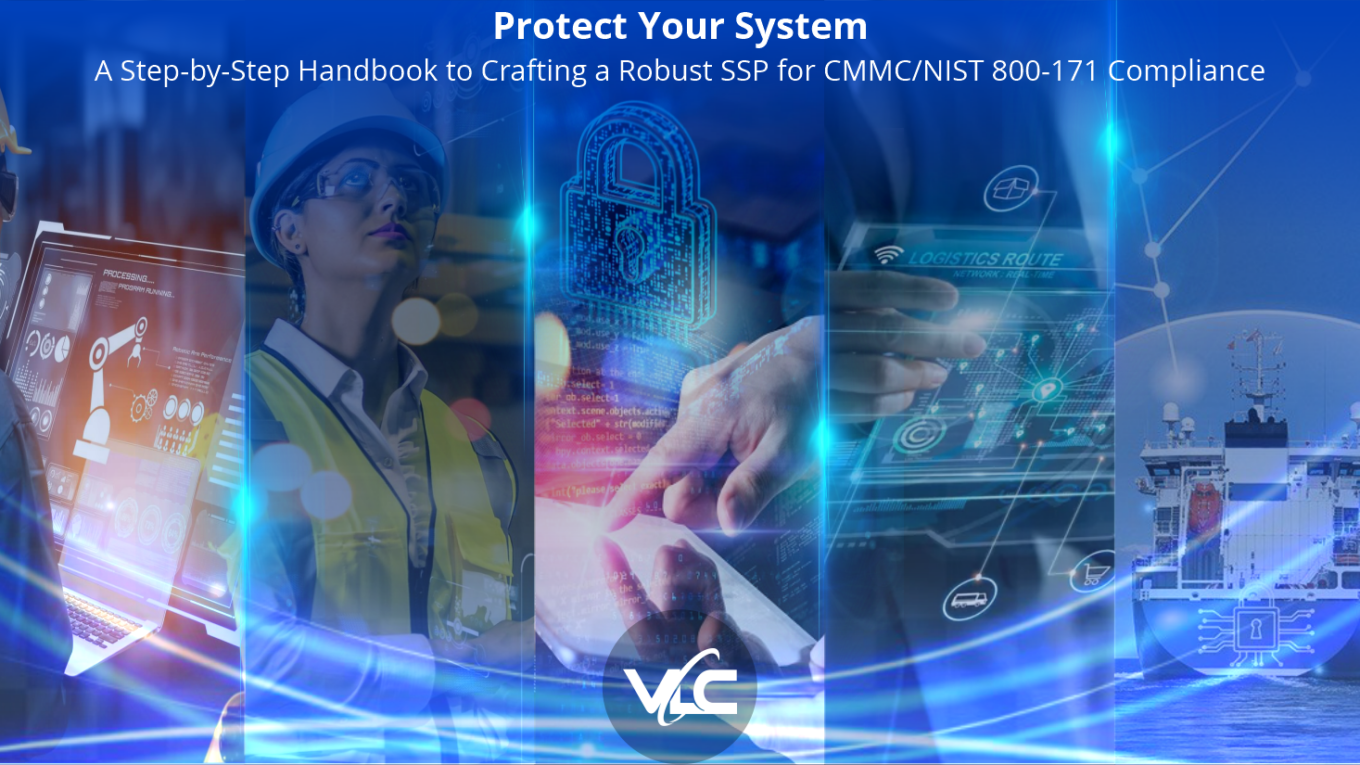Protect Your System: A Step-by-Step Handbook to Crafting a Robust SSP for CMMC/NIST 800-171 Compliance
As the digital world evolves, so does the need for sturdy cybersecurity measures. With the Cybersecurity Maturity Model Certification (CMMC) and NIST SP 800-171 frameworks at your disposal, safeguarding your information systems is within reach. This blog is your go-to resource for crafting a comprehensive System Security Plan (SSP) that aligns with CMMC/NIST 800-171 requirements.
What are CMMC and NIST SP 800-171?
Amidst the complex world of cybersecurity, two key players have emerged: CMMC and NIST SP 800-171. While CMMC serves as the unwavering safeguard for the Defense Industrial Base (DIB), honing in on controlled unclassified information (CUI) in non-federal systems, NIST SP800-171 is the ultimate guidebook published by the National Institute of Standards and Technology. It offers a blueprint for fortifying CUI confidentiality, leaving no stone unturned in protecting sensitive information.
Venturing to develop a System Security Plan (SSP) can initially seem challenging, but worry not! With these tried-and-true steps, you’ll be well on your way to drafting an impenetrable defense against cyber threats. Throughout the process, keep these thought-provoking questions top of mind: Where does information enter our system? Where is it stored – on-premises, cloud, backup/DR? Who has access to the data, and how do they use it? How is it stored, processed, and transmitted? Who supports the systems, and where are the users located physically? Trust us; these questions will be your guiding light as you build a fortress around your valuable information.
- Systematically Sort and Classify Your Information Systems
Every successful journey begins with a solid first step – and in crafting a watertight SSP, identifying your information systems is just that. By pinpointing each system that handles CUI and then categorizing them based on both their security needs and the sensitivity of the data they contain, you’ll pave the way for achieving your desired CMMC level. - Evaluate Your Existing Security Controls
Ensuring your security controls align with NIST SP800-171 is a crucial aspect of developing a robust SSP. By thoroughly reviewing your current controls and pinpointing areas of non-compliance, you can create a comprehensive plan to bridge any gaps. Remember that the CMMC framework is cumulative, so each level builds upon the requirements of the previous levels. With the help of this knowledge, it’s time to put pen to paper and document all the relevant security controls, policies, and procedures as you formulate your custom SSP. - Run Regular Reviews
Creating an SSP is just the first step in securing your information systems – ensuring it remains up-to-date and relevant is equally crucial. For this, periodic assessments are key. You can conduct these evaluations internally or rely on third-party providers to do the heavy lifting. After analyzing the results, document your findings in a Basic Assessment Report (BAR) and upload them to the Department of Defense’s Supplier Performance Risk System (SPRS) as needed. Doing so lets you rest easy knowing that your security measures remain threat-proof. - Prepare Your Crew
Your workforce is an integral component in safeguarding your information systems. By regularly providing cybersecurity training that emphasizes best practices, you equip your staff with the tools necessary to protect CUI. Ensuring that your employees understand their roles and responsibilities in securing sensitive data is as essential. With a well-informed team, you’ll create a culture of security that bolsters your SSP and helps defend against potential threats. - Strengthen and Revamp Your SSP
An effective SSP is a dynamic document that evolves alongside your organization’s changes and adapts to new potential risks. Regular review and updates ensure that it stays current with any modifications in your information systems or newly discovered threats. In addition to critical elements like Data Flow Diagrams, Plans of Action & Milestones, Asset Inventories, Users, and Periodic Reviews, your SSP should encompass every aspect of your information systems that’s essential for your organization’s well-being.
If you want to keep your treasured data safe and stay compliant with federal regulations, developing an SSP that meets the standards of CMMC/NIST SP800-171 is the way to go. This guide has got you covered with practical steps to follow. By sticking to them, you can keep your organization in a solid form to tackle any cybersecurity challenge that comes your way and keep that sensitive data on lock.
When it comes to creating and managing your SSP, we know there’s a lot to handle. But don’t worry because, at VLC Solutions, we’ve got your back. Our team of compliance experts can help you meet controls, assessment objectives and achieve compliance requirements while safeguarding your sensitive information. Ready to take the first step towards secure and compliant operations? Contact us today!
